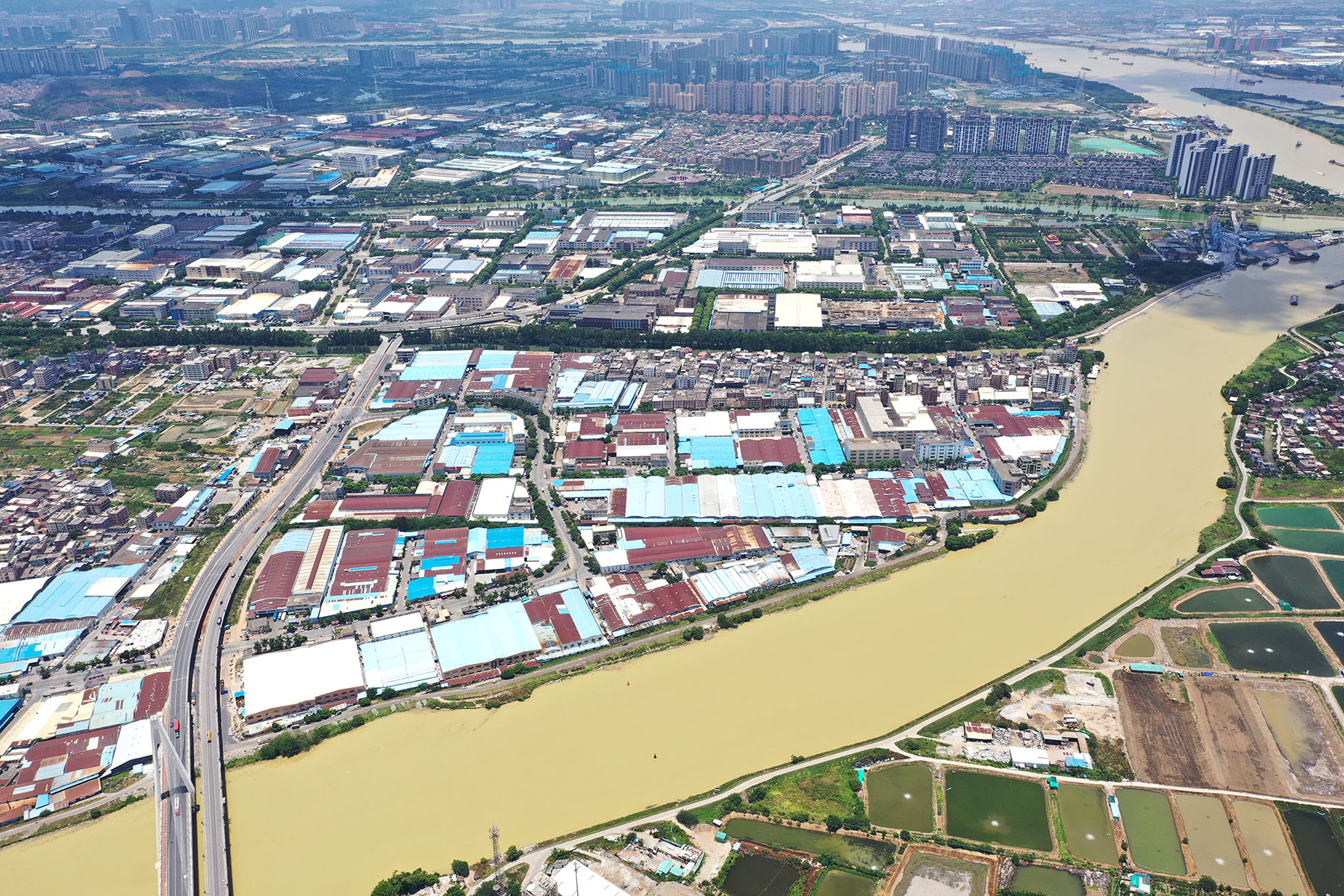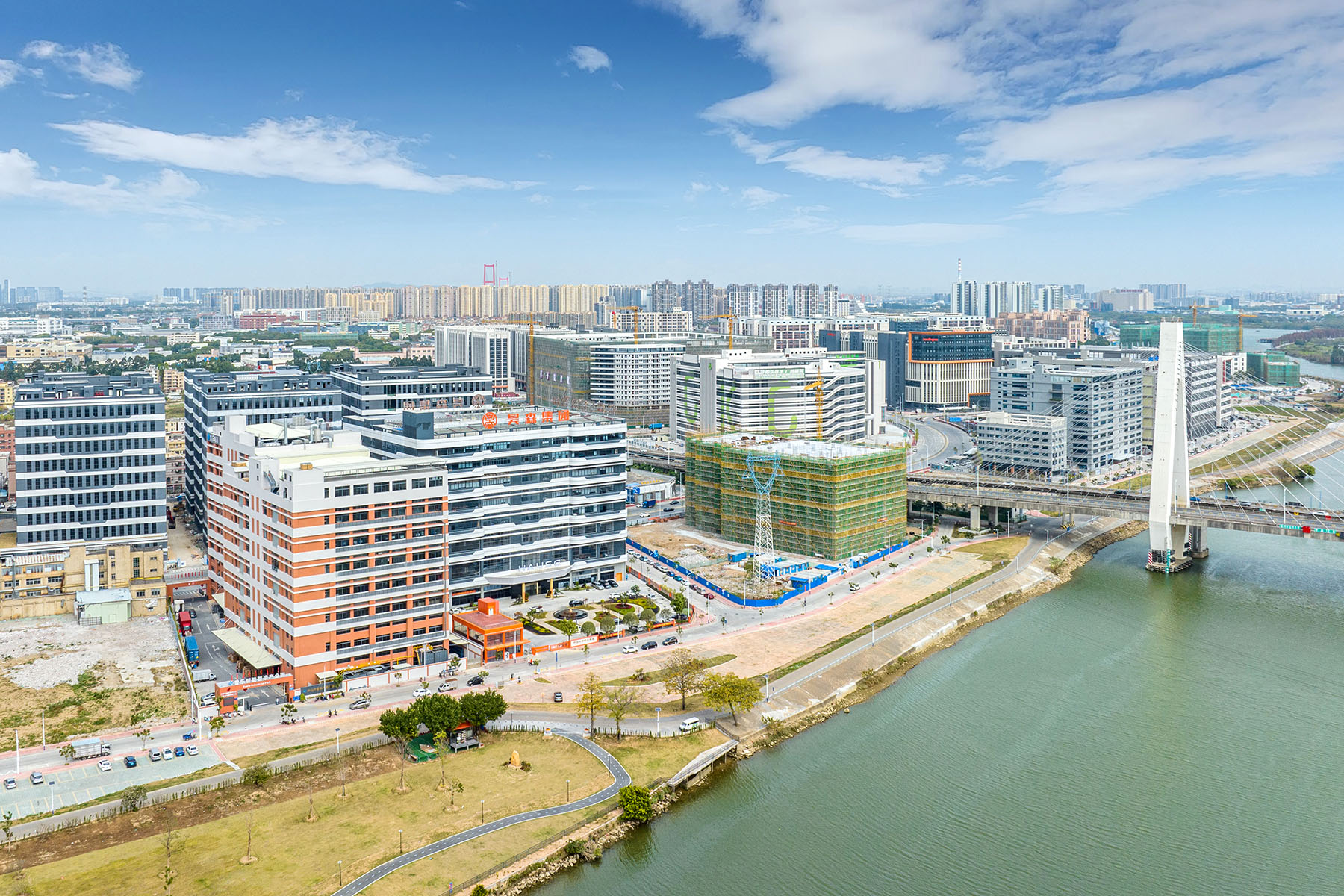Zhongshan’s run-down factories have given way to modern industrial parks in an ambitious renovation drive aimed at upgrading manufacturing quality, expanding customer bases, and improving the city’s overall image. Wu Menglei reports from Hong Kong.

The simple galvanized-steel sheds that remain in some of Zhongshan’s aging factories will soon be a thing of the past.
Companies with dilapidated buildings and environmentally harmful practices have been encouraged to upgrade and transform, leading to the establishment of new modern factories, and the city’s once-dusty dirt roads that linked them are now paved with asphalt.
Industrial park renovation has been a key policy direction for Zhongshan — one of the nine Chinese mainland cities in the Guangdong-Hong Kong-Macao Greater Bay Area — in recent years as it pushes ahead to upgrade its manufacturing businesses and improve the city’s overall image.
Zhongshan Tuowo Caster Industry Co was among the first batch of enterprises in the city’s Xiaolan town to benefit from the campaign.
“We used to rent galvanized-steel sheds as our factories that were scattered in three places,” recalls Lei Zhenbiao, manager of the caster manufacturer. “The ground was bumpy, the workshop was dusty, and the management was chaotic. In such conditions, it was difficult to fulfill orders that demanded high-precision manufacturing.”
READ MORE: Zhongshan’s industrial park renovation fuels city’s growth
Zhongshan Tuowo is now housed in a six-floor industrial building. According to Lei, the new setting has won customers’ confidence and the trust of foreign business partners.
According to the Zhongshan authorities, in 2021, a third of Zhongshan’s low-efficiency industrial parks consisted of poorly designed galvanized-steel sheds on sites with an average plot ratio (the proportion of total floor area to land area) of just 0.6, reflecting low land-use intensity.
“We needed to upgrade our factories and put on a new face,” says Deng Yuwen, deputy director of Zhongshan’s municipal bureau of natural resources.
“If trading partners were to visit our factories and observe substandard production conditions, they might walk away from deals,” says Deng.
The low plot ratio meant that building industrial parks required more land. The Zhongshan authorities said in 2021 that the city’s built-up area was approaching nearly 40 percent of its total land — far exceeding the international standard of 30 percent for a livable city.
“The matter had become more urgent as we expected the number of enterprises in Zhongshan to increase with the opening of the Shenzhen-Zhongshan Link that would attract more enterprises from Shenzhen to Zhongshan,” says Deng.
In 2022, Zhongshan launched a program to renovate and upgrade its low-efficiency industrial parks and optimize land-use management.

Finding the right solutions
However, the work presented challenges as the land at many industrial parks was legally occupied by companies, and renovation would affect their production or even stop it for a few years, says Li Youzhi, chairman of Zhongshan Caster and Wheel Manufacturers Association.
To solve these problems, the association helped the government to promote the upgrading work. The authorities subsequently agreed to provide incentives and subsidies to eligible companies.
Another challenge was how to make full use of the upper spaces of multistory factory buildings, says Li, considering a lot of production equipment, such as injection molding machines for caster manufacturing, is heavy and can only be placed on the ground floor.
One solution was to turn those spaces into pharmaceutical factories.
“Although some pharmaceutical firms also need to use heavy injection molding machines, other equipment in pharmaceutical factories is lighter and suitable for use on the second or third floors,” says Sam Fong, general manager of LongYao Investment, an industrial park construction contractor and operator. The company established a Guangdong, Hong Kong and Macao health service platform in industrial parks in Sanxiang, a town in Zhongshan.
For the government, the cost of carrying out such a large project also presents a challenge. To keep the budget in check, the authorities chose promising companies to support the move to new factories, and agreed to provide them with tax subsidies.
“This way, the government can promote large projects with a small budget,” says Deng. “Besides improving the city’s appearance, the upgrading work represents a revolution for higher efficiency.” The new factories provide the foundation for automated transition, enabling factory owners to design their production lines, he adds.
ALSO READ: Cross-sea link link boosts regional ties, benefits HK and beyond
Zhongshan’s experience in upgrading its industrial areas has been recognized by cities in Guangdong and other provinces.
It has been a decisive task for Zhongshan’s sustainable economic development, and the city will continue to pursue it, says Deng.
After years of upgrading, the average plot ratio of Zhongshan’s factories has risen from 0.6 in 2021 to more than 3.0 this year, according to the latest official statistics.
With ongoing upgrades in the manufacturing sector, many factories in Zhongshan, known for its robust manufacturing base, have received an increasing number of inquiries about high-quality products from potential clients, including overseas companies.
More than 48,000 mu (3,200 hectares) of inefficient industrial land has been renovated as of early 2025, with 823 local enterprises having increased their production. The city has also attracted 1,028 new enterprises, with an estimated total investments of 186 billion yuan ($25.94 billion).
Contact the writer at thor_wu@chinadailyhk.com


